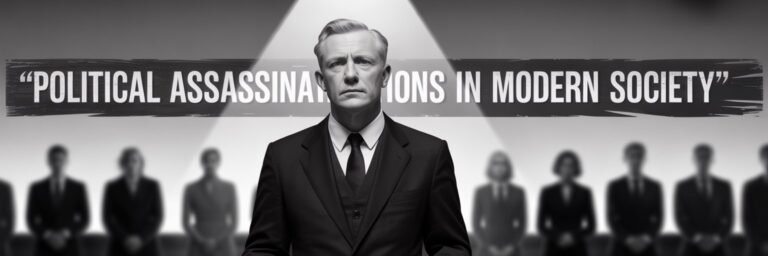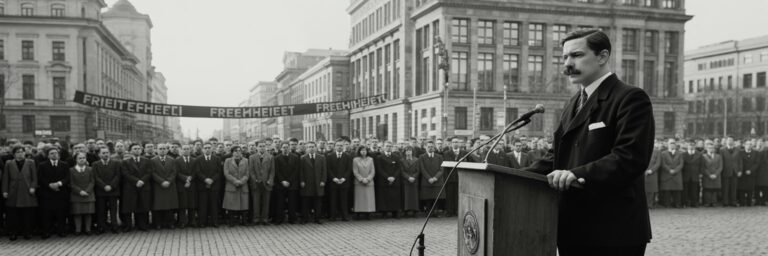INTRODUCTION
Drama, intrigue, treachery, the story of political assassinations is replete with compelling narratives, etched into the annals of our global sociopolitical history. It pivots on the fulcrum of power, where individuals are removed for the perceived greater good, personal gain, or political revolution. Through the looking glass of history, we catch a glimpse of humanity’s darker aspects and rawest political maneuvers, simultaneously acknowledging our collective progress and dimensions yet unrevealed. This account attempts to unpack the untold story of political assassinations.
HISTORICAL BACKGROUND
Political assassinations, crudely defined as the targeted killing of political figures, trace their roots back to antiquity. Many consider the earliest recorded political assassination as that of Egyptian Pharaoh Ramesses III in 1155 BC, slain in what historians now call the ‘Harem Conspiracy.’ Yet, the term ‘assassination’ originates from the Hashshashin sect of the 11th to the 13th century, expert killers reputed for their mysterious and strategic executions.
The popularity attributed to assassination presumably was due to the belief in ‘tyrannicide,’ the idea justifying the killing of a tyrant for the common good. This concept was approved by ancient philosophers like Plato and Aristotle and was further embedded during the Roman Rule, most notably with the infamous assassination of Julius Caesar in 44 BC.
The Renaissance witnessed a crisis in the concept of tyrannicide as Machiavellian pragmatism replaced the heroic virtue. Assassinations became tools in the game of thrones, evident in the notorious Borgia family’s dominance. The trend of state-sponsored assassinations resurfaced strongly again during the World Wars, as geopolitical stakes heightened.
THEORIES AND INTERPRETATIONS
Assassinations, by their nature, invite intense speculation and varying interpretations. The meticulously executed murder of Archduke Franz Ferdinand in 1914, which propelled the world into World War I, is widely accepted as a Serbian nationalist act, yet conspiracy theories implicate international intelligence agencies.
The Kennedy assassination remains awash with theories. Beyond the official conclusion attributing the act to lone gunman Lee Harvey Oswald, there are suggestions relating to the Soviet Union, Cuban Exiles, or even rogue elements within the American administration. In a completely alternative interpretation, academic Michael Parenti considers it a coup d’etat by America’s military-industrial complex.
MYSTERIES AND CONTROVERSIES
Conspiracy theories, inherent with political assassinations, often stem from the unanswered questions that surround these incidents. The murder of Swedish Prime Minister Olof Palme in 1986 fostered numerous theories owing to its initial unsolved status. Propaganda campaigns alleging KGB involvement only deepened these intrigues, despite recent convictions pointing to a lone radical.
The assassination of Indian Prime Minister Indira Gandhi shook the nation in 1984. The operation’s hasty execution, sudden political upheaval and subsequent pogroms against the Sikh community have provoked enduring controversy and conspiracy theories, with accusations even reaching the highest echelons of government.
SYMBOLISM AND CULTURAL SIGNIFICANCE
Political assassinations ripple beyond the act itself, distorting cultural fabrics, influencing arts and literature, and glimpsing into societies’ psyche. The killing of Egypt’s Anwar Sadat in 1981 became a symbolic wound against peace in the Middle East following his detente with Israel, reflecting regional tensions.
In America, the Lincoln and Kennedy assassinations created a shrine of martyrdom, inducing cultural shifts as they marked national grief and the abrupt end of progressive eras. They also became entrenched in art and literature, as cultural symbols exploring themes of power, tragedy, and moral disillusionment.
MODERN INVESTIGATIONS
Modern technology has revolutionized investigations to a great extent. For instance, while opening Tutankhamun’s tomb, Egyptologists used forensic analyses and DNA testing to solve the Pharaoh Tutankhamun’s death mystery later believed to be an assassination.
Reluctance in revealing classified documents, as in Kennedy assassination, often hampered investigations. However, in 2017, the U.S. government released secret files, bringing forth minute details that intrigued theorists. Even today, modern techniques prove their worth, as with the recent use of AI in predicting potential political assassinations – a surreal glimpse into a possible future.
LEGACY AND CONCLUSION
While political assassinations leave a grim legacy of power struggles, brutality, and inveterate conflicts, they also spur societal transitions and political reforms. The era-defining Kennedy assassination birthed the President John F. Kennedy Assassination Records Collection Act for increased governmental transparency. The assassination of Louis Mountbatten by the IRA in 1979 played a part in galvanizing public sentiment against violence and was instrumental in Northern Ireland’s peace process.
Political assassinations pull us into a vortex, where history, morality, power, and survival intersect. Yet, in navigating through the labyrinth of history and unveiling the cold details, we gain insightful comprehension. In the end, these deaths, though tragic and chilling, hold a mirror to our shared history and the evolution of our collective consciousness. Indeed, the untold story of political assassinations serves as a testament to our history, an indelible reminder of our past and a warning for our future. Unpacking this historical narrative illuminates our understanding of the intricate intersections, inviting us to contemplate the vast array of human nature.






